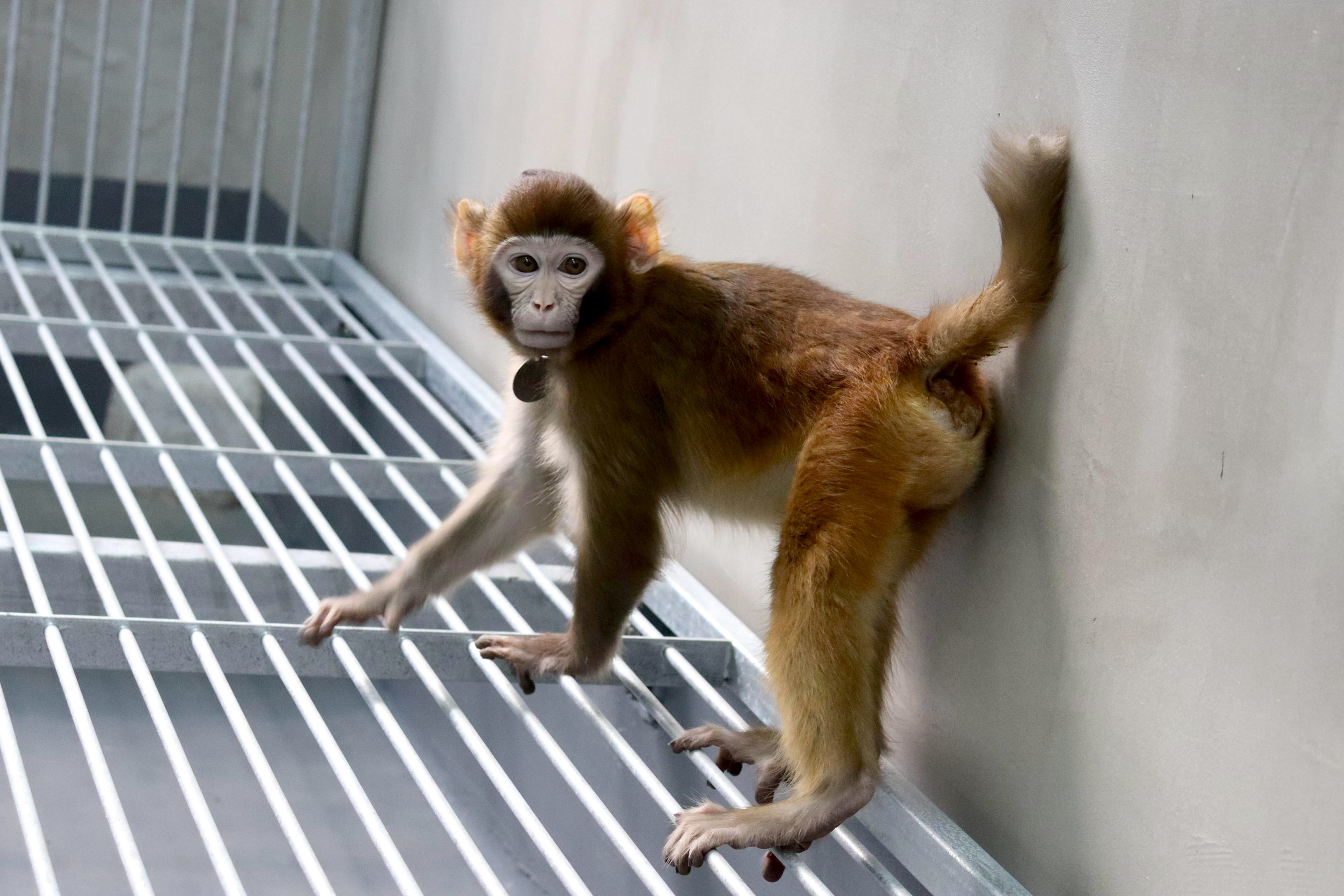[ad_1]

For the first time, a cloned rhesus monkey (mulatto macaca) has lived to adulthood and has survived more than two years so far.
The feat, described today in Nature Communications, marks the first successful cloning of the species. It was achieved using a slightly different approach from the conventional technique used to clone Dolly the sheep and other mammals, including long-tailed macaques (fascicular macaca), the first primates to be cloned.
By replacing the placenta of the cloned embryo with that of embryos produced by a in vitro With the fertilization technique, scientists reduced developmental defects that can make it difficult for embryos to survive, using fewer embryos and surrogate mothers. The new technique could open possibilities for using cloned primates in drug testing and behavioral research.
“We could produce a large number of genetically uniform monkeys that could be used for drug efficacy testing,” says Mu-ming Poo, director of the Institute of Neuroscience at the Chinese Academy of Sciences in Shanghai.
Low survival rate
The standard cloning technique known as somatic cell nuclear transfer (SCNT), in which the nucleus of a body cell is transferred to an egg whose nucleus has been removed, typically results in extremely low birth and survival rates for cloned embryos.
Success in primates has been particularly limited.
When the researchers long-tailed macaques cloned in 2018, They created 109 cloned embryos and implanted nearly three-quarters of them into 21 surrogate monkeys, resulting in six pregnancies. Only two of the monkeys survived birth.
In 2022, researchers cloned a rhesus monkey using SCNT, but the animal survived less than 12 hours.
To investigate what can go wrong in the cloning process, researchers at the Chinese Academy of Sciences in Shanghai compared 484 rhesus SCNT embryos with 499 embryos produced by directly injecting a sperm into an egg, a technique known as intracytoplasmic sperm injection ( ICSI). The two types of embryos went through similar stages of development before being implanted into surrogate mothers. But only 35 SCNT embryos were successfully implanted, compared with 74 ICSI embryos, and fewer SCNT embryos survived to term.
The researchers performed a series of DNA analyzes of SCNT embryos and found significant differences in the patterns of epigenetic modifications (structural changes that impact gene activity without altering DNA sequence) during development. This included a decrease in DNA methylation, a process that affects gene expression levels. “If you have different methylation (patterns), then gene expression during development is different,” explains Poo. “That’s why a cloned embryo doesn’t develop well.”
The researchers also found that genes that are normally expressed differently between maternal and paternal genomes lost their distinct patterns in the cloned embryos, especially in placental cells. Additionally, the placentas that developed for the SCNT embryos appeared to be thicker than normal and contained defects.
To address this, the researchers developed a technique that involved replacing the SCNT trophoblast (the outer layer of cells in a developing embryo, which then forms most of the placenta) with trophoblasts from ICSI embryos. This meant that the embryos developed a “natural placenta,” says study co-author Zhen Liu, a neuroscientist at the Chinese Academy of Sciences, “but the fetus is still a cloned fetus.”
A healthy clone
Using this approach, the researchers created 113 cloned rhesus monkey embryos and implanted 11 of them into seven surrogate mothers, resulting in two pregnancies.
One of the pregnant surrogate mothers gave birth to a healthy male rhesus monkey named ReTro, who has survived for more than two years. (The other surrogate mother had twins, who died on day 106 of gestation).
The researchers showed that incorporating replacement trophoblasts into SCNT clones reduced defects in placenta and DNA methylation. But “the efficiency of the process is similar, even lower” than that of SCNT, said Lluís Montoliu, a geneticist at Spain’s National Center for Biotechnology in Madrid, in a statement to the UK’s Science Media Center in London. “It is extremely difficult to be successful with these experiments, with such low efficiencies,” he added.
Since the first primate was cloned using SCNT six years ago, scientists have used cloned monkeys to model diseases such as depression and anxiety, and to evaluate the effectiveness and safety of medications, including antidepressants.
“We are now seeing the beginning of the use of these cloned monkeys,” says Poo. “We want to use as few animals as possible to demonstrate the efficacy of the drug, without the interference of genetic background.” But he adds that the process of producing clones still involves too many substitutes. Even with the most recent advances, “we haven’t solved the efficiency of cloning,” he says.
This article is reproduced with permission and was first published on January 16, 2024.